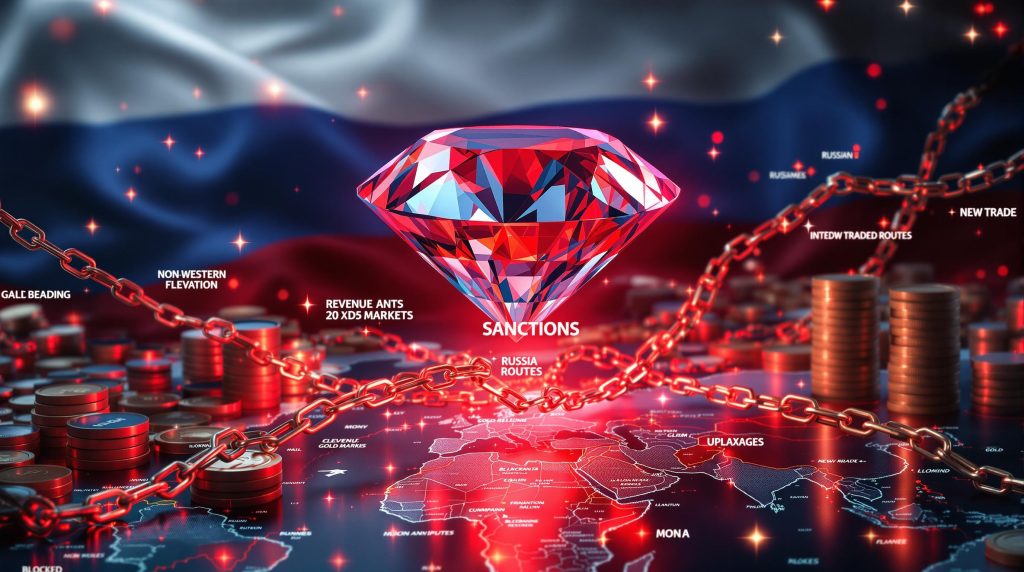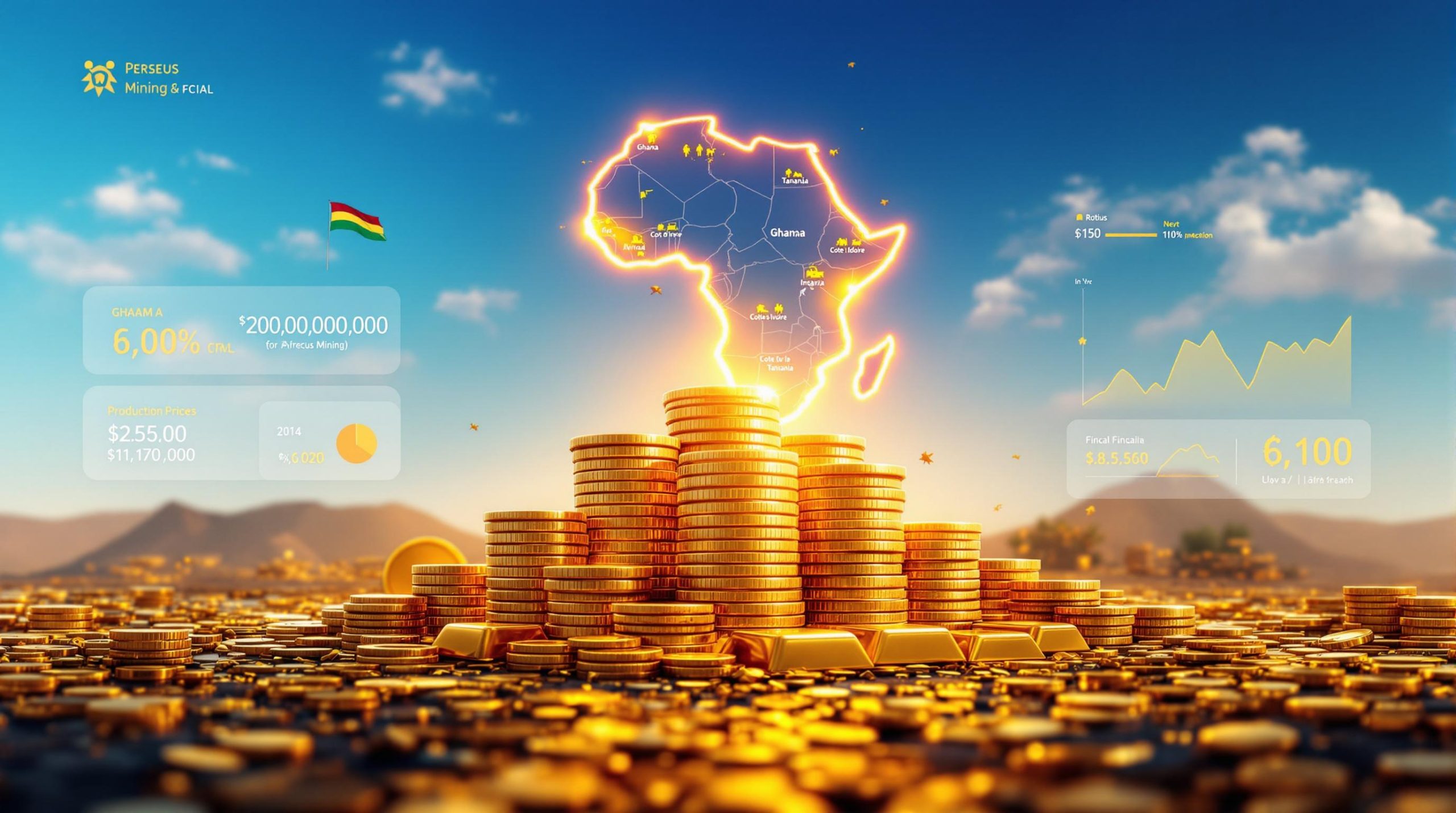The Financial Impact of Sanctions on Russian Diamond Production
The Russian diamond industry has experienced significant financial turmoil since the implementation of comprehensive international sanctions. With Alrosa being one of the world's largest diamond producers, the impact of these restrictions has sent ripples throughout the global diamond market and fundamentally altered the company's financial trajectory. Such disruptions have directly affected gold price forecast estimates as investors seek alternative safe-haven assets.
Key Sanctions Timeline and Their Effects
The sanctions against Russia's diamond industry have evolved in several stages, each adding additional pressure on Alrosa's operations and revenue streams:
US Sanctions on Alrosa (2022)
- First major restriction targeting the company's operations
- Prevented access to US financial systems and markets
- Created initial barriers to international transactions
- Limited ability to conduct business in US dollars
G7 Ban on Direct Russian Diamond Imports (January 2024)
- Represented the first coordinated multilateral action specifically targeting Russian diamonds
- Closed primary market access to major diamond consuming nations
- Created immediate revenue challenges for Russian producers
- Forced Alrosa to seek alternative markets and sales channels
EU and G7 Third-Country Import Ban (2024)
- Closed crucial loophole where Russian diamonds entered through intermediary countries
- Established comprehensive tracking systems to monitor diamond origins
- Created a more comprehensive barrier to Russian diamond exports
- Effectively isolated Russian diamonds from major Western markets
Industry Note: The diamond industry has responded to sanctions with enhanced traceability systems and origin verification protocols that have created additional compliance costs throughout the supply chain.
Revenue and Profit Analysis
Alrosa's financial performance has been severely impacted by the sanctions regime, with the company reporting significant revenue declines despite maintaining production levels. According to recent financial statements, Alrosa experienced:
- 25% decline in revenue to 134.3 billion roubles in first-half 2025
- 42% drop in core earnings (EBITDA) to 37.1 billion roubles
- 10.8% increase in net profit to 40.6 billion roubles ($506.7 million)
The seemingly contradictory profit increase despite falling revenue can be attributed to a one-time sale of international assets, specifically the divestment of Alrosa's 41% stake in Angola's Catoca mine for 15.9 billion roubles. This strategic exit from international holdings came under significant political pressure as Angola faced mounting international criticism for maintaining partnership with sanctioned Russian entities.
The company's debt position has deteriorated considerably, with:
- Net debt increasing nearly 10-fold to 61 billion roubles
- Cash, equivalents, and bank deposits rising 8.4% to 115.4 billion roubles
- Significant shift in debt-to-equity ratios compared to pre-sanctions levels
According to Alrosa's own assessment: "The relatively high level of the key rate and inflation continued to have an additional negative impact on the (group) in the first half of 2025."
How Are Macroeconomic Factors Compounding Sanctions Effects?
While sanctions have directly limited Alrosa's market access, several macroeconomic factors within Russia and globally have intensified these challenges, creating a perfect storm of financial pressure. These pressures have similarly affected the gold market performance in recent months.
Interest Rate Pressures
Russia's monetary policy response to sanctions has created additional financial strain on diamond producers:
- Central Bank of Russia maintained elevated borrowing costs throughout 2024
- Recent easing cycle began with modest rate cut to 18% from 20% in July 2025
- High interest rates have:
- Increased financing costs for ongoing operations
- Limited capital available for expansion or modernization
- Reduced ability to weather extended periods of reduced revenue
- Created cash flow challenges for debt servicing
Inflation Challenges
The Russian economy has experienced significant inflationary pressure since sanctions were implemented, directly impacting Alrosa's operational costs:
- Rising expenses for materials, equipment, and fuel
- Increased labor costs as inflation drives wage demands
- Higher transportation and logistics expenses
- Eroding profit margins despite stable production levels
These inflation factors have compounded the revenue restrictions from sanctions, creating a financial squeeze from both the income and expense sides of operations.
Market Demand Uncertainties
Beyond direct sanctions impacts, broader market forces have created additional headwinds:
Geopolitical Tensions
- Unpredictable market conditions affecting buyer confidence
- Disruption of traditional diamond trading routes and relationships
- Reputational concerns for companies sourcing Russian diamonds
- Emergence of risk premiums on Russian-origin stones
Global Economic Factors
- Shifting consumer spending patterns in luxury markets
- Growing popularity of lab-grown diamonds as alternatives
- Increased competition from non-Russian diamond sources
- Price volatility in certain diamond categories and sizes
Market Impact: The sanctions have effectively created a two-tier pricing system in global markets, with Russian diamonds trading at discounts in non-sanctioning countries while prices for non-Russian diamonds have risen in Western markets due to supply constraints.
Strategic Responses to Sanctions
Faced with unprecedented challenges, Alrosa has implemented several strategic initiatives to maintain operations and adapt to the new market reality. These approaches mirror some US-China trade strategies developed in response to similar international tensions.
Divestment from International Assets
A cornerstone of Alrosa's sanctions response has been the strategic exit from vulnerable international holdings:
- Angola Catoca Mine Stake Sale
- Completed sale of 41% stake for 15.9 billion roubles in May 2025
- A subsidiary of Oman's sovereign wealth fund replaced Alrosa as shareholder
- Deal came after significant pressure on Angola to sever ties with Russian entities
- Transaction represented both a financial necessity and strategic repositioning
This divestment provided crucial liquidity while reducing exposure to international political pressure, allowing the company to focus on core Russian operations where it maintains greater operational control and regulatory certainty.
Market Reorientation
With Western markets effectively closed, Alrosa has pivoted to alternative buyers:
- Shift to Non-Western Markets
- Increased focus on diamond buyers in non-sanctioning countries
- Development of new sales channels and distribution partnerships
- Adaptation of marketing strategies for different cultural contexts
- Price adjustments to attract buyers in more competitive environments
This reorientation has required significant changes to established business models, including revised pricing strategies, new relationship building, and adaptation to different regulatory environments and business practices.
Financial Restructuring
To weather the extended sanctions period, Alrosa has implemented comprehensive financial strategies:
- Cash Preservation Initiatives
- Building cash reserves despite revenue challenges (8.4% increase to 115.4 billion roubles)
- Maintaining liquidity to ensure operational continuity
- Restructuring debt obligations to manage increased interest burdens
- Implementing operational efficiencies to reduce costs
These measures aim to create financial resilience against continued market restrictions while maintaining core production capabilities for eventual market recovery.
Long-Term Implications for Global Diamond Markets
The sanctions against Russian diamonds have triggered fundamental changes in global diamond markets that will likely persist even if restrictions are eventually lifted. These changes align with broader mining industry trends affecting resource extraction globally.
Supply Chain Disruptions
The isolation of Russian diamonds has forced a significant restructuring of global diamond flows:
-
Emergence of New Trading Patterns
- Development of alternative diamond hubs in non-sanctioning countries
- Creation of parallel supply chains for different market segments
- Increased complexity in diamond sourcing and distribution
- Higher transaction costs throughout the supply chain
-
Price Effects and Market Segmentation
- Premium pricing for fully traceable, non-Russian stones
- Potential discounting in markets still accepting Russian diamonds
- Varying price impacts across different diamond categories
- Growing importance of origin certification and documentation
Competitive Landscape Changes
The sanctions have created both challenges and opportunities for different market participants:
-
Opportunities for Alternative Producers
- African diamond-producing nations seeing increased buyer interest
- Canadian mines benefiting from "sanctions-free" marketing advantage
- Accelerated development of previously marginal mining projects
- Changing power dynamics among major diamond producers
-
Lab-Grown Diamond Market Acceleration
- Sanctions contributing to faster adoption of synthetic alternatives
- Price advantage of lab-grown diamonds becoming more attractive
- Reduced stigma around synthetic stones as supply chains adjust
- Increased investment in synthetic diamond production capacity
Industry Adaptation and Compliance
The diamond industry has responded with new systems and procedures:
-
Traceability and Certification Enhancements
- Development of blockchain and digital tracking solutions
- More rigorous documentation requirements throughout supply chain
- Investment in advanced testing to verify diamond origins
- Industry-wide collaboration on standards and verification protocols
-
Compliance Cost Increases
- Higher administrative burdens for diamond traders and retailers
- Increased due diligence requirements for financial institutions
- Legal and consulting expenses related to sanctions compliance
- Technology investments for verification and documentation
Future Outlook for Alrosa Under Sanctions
Alrosa faces both significant challenges and potential opportunities as it navigates an extended sanctions period. As with gold safe haven market dynamics, the diamond sector is experiencing fundamental shifts in investor and consumer behavior.
Potential Recovery Scenarios
Several strategic directions could shape Alrosa's future trajectory:
-
Domestic Market Development
- Expansion of Russian internal diamond processing and retail
- Creation of vertically integrated operations within Russia
- Government support programs for domestic diamond industry
- Reducing dependency on international markets through national consumption
-
Alternative International Partnerships
- Strengthening ties with non-sanctioning countries
- Development of joint ventures in friendly jurisdictions
- Exploration of barter and alternative payment arrangements
- Investment in production facilities outside Russia
Sustainability of Current Business Model
Alrosa's ability to maintain operations depends on several critical factors:
-
Production Cost Management
- Implementation of efficiency measures to offset inflation
- Optimization of operations under restricted revenue conditions
- Balancing production volumes with market access limitations
- Technology investments to reduce operating expenses
-
Long-term Strategic Positioning
- Maintaining core mining assets and technical capabilities
- Preserving diamond reserves for future market opportunities
- Developing flexibility to respond to potential sanctions changes
- Investing in reputation management for eventual market reentry
Strategic Consideration: Alrosa must balance immediate financial pressures against long-term asset preservation, as prematurely liquidating high-quality diamond reserves at discounted prices could permanently damage the company's future prospects.
FAQ: Sanctions Impact on Diamond Markets
How have sanctions affected global diamond prices?
Sanctions have created market segmentation with varying price impacts. In Western markets, certified non-Russian diamonds now command premium prices, particularly in larger, high-quality categories where Russian production was previously dominant. Simultaneously, in markets still accepting Russian diamonds, prices have faced downward pressure as sellers compete for a smaller buyer pool. According to Rapaport News, this two-tier pricing system has created arbitrage opportunities for traders operating across market boundaries while increasing overall market volatility.
Will sanctions lead to diamond shortages?
While Alrosa represents approximately 30% of global diamond production by volume, the market has largely adjusted through multiple mechanisms. Production increases from other sources, particularly in Africa and Canada, have partially offset reduced Russian exports to Western markets. Additionally, increased recycling of existing diamonds, accelerated development of previously marginal deposits, and faster adoption of lab-grown alternatives have helped prevent significant shortages. However, certain specialized categories where Russian production was particularly dominant may experience continued supply constraints.
How are diamond retailers adapting to Russian diamond sanctions?
Major jewelry retailers in sanctioning countries have implemented comprehensive adaptations:
- Enhanced traceability systems with documentation requirements
- Revised supplier contracts with explicit origin guarantees
- Increased inventory of non-Russian diamonds at higher costs
- Greater marketing emphasis on diamond origins and ethical sourcing
- In some cases, expanded offerings of lab-grown diamonds as alternatives
- Development of specialized staff training on compliance requirements
- Implementation of third-party verification and certification processes
What alternative markets are emerging for Russian diamonds?
Countries not participating in sanctions have become increasingly important for Russian diamond sales:
- India – Expanding its role as processing hub for Russian diamonds
- China – Increasing direct purchases for domestic consumption
- UAE – Developing as alternative trading center for Russian stones
- Various African nations – Exploring partnerships and processing opportunities
- Select Southeast Asian markets – Emerging as secondary distribution channels
These alternative channels often involve adjusted pricing strategies, new intermediaries, and more complex transaction structures to manage the challenges of international banking restrictions. Mining.com reports that these market shifts have forced Alrosa to suspend operations at less profitable deposits as the company adapts to the new market reality.
Diamond Industry Adaptation Under Sanctions Pressure
The global diamond industry continues to evolve in response to the sanctions environment, creating both challenges and opportunities for various market participants. As supply chains reconfigure and compliance requirements increase, the fundamental structure of diamond trading is undergoing its most significant transformation in decades. Companies throughout the value chain are investing in new capabilities, forming different partnerships, and developing innovative approaches to navigate this changed landscape.
For Alrosa specifically, the path forward involves balancing immediate financial pressures against strategic asset preservation while exploring new market opportunities in a significantly altered global diamond ecosystem.
Looking for the Next Major Diamond Discovery?
Discover significant ASX mineral discoveries as they happen with Discovery Alert's proprietary Discovery IQ model, which transforms complex geological data into actionable investment insights. Understand why historic discoveries can generate substantial returns by visiting Discovery Alert's dedicated discoveries page and begin your 30-day free trial today to position yourself ahead of the market.




